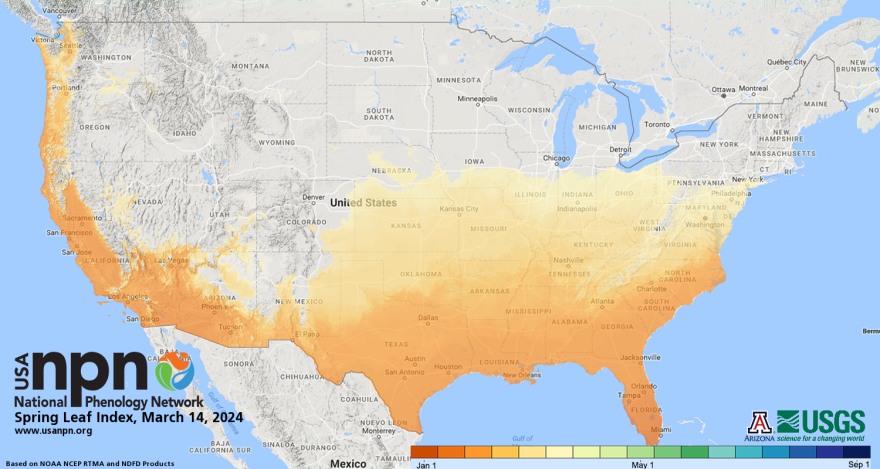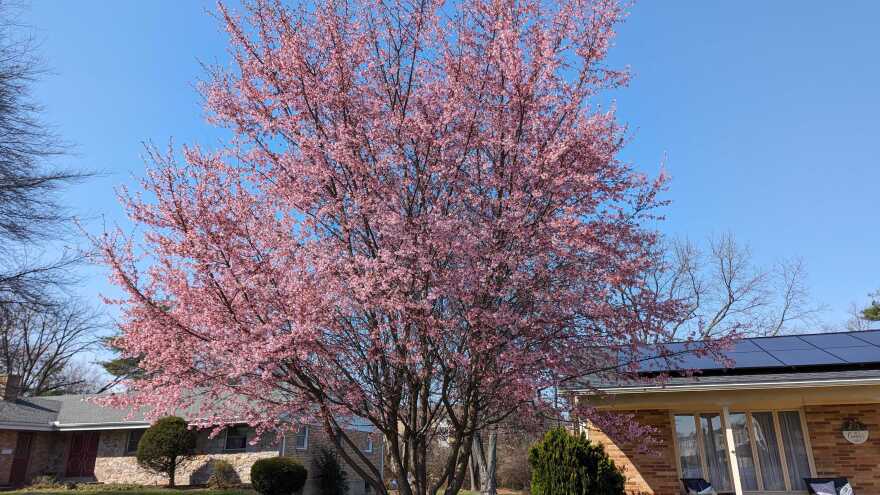BETHLEHEM, Pa. — Despite a warm surge this week, forecasters say it’s going to feel more like winter in the Lehigh Valley as we head towards the official first day of spring.
The temperature hit 74 degrees in the Allentown area Thursday, well shy of the record high for the date of 81 degrees. But it was 24 degrees above normal for mid-March, and 36 degrees warmer than it was on the same date last year.
Unfortunately, all good things must come to an end. March is recognized as a month of extremes for a reason, and the upcoming weeks will feature a battle between two seasons: winter and spring.
Here’s what to watch as the back half of the month unfolds:
The pollen count
Temperatures soared, and so did the pollen count.
According to pollen.com, tree pollen is making life miserable for allergy sufferers. That includes pollen from Juniper, Elm and Maple, the site says.
The 30-day historic pollen levels for the area show a reading of 6.9 (out of 12) on Thursday, with those numbers expected to climb through the weekend and early next week.

Spring has awakened
The night of Tuesday, March 19, will mark the start of astronomical spring in the northern hemisphere, but it turns out spring is already here.
The National Phenology Network’s “First Bloom Indices” is a synthetic measure of early-season events in plants, based on recent temperature conditions. The model allows for tracking the progression of spring onset across the country, and in the Lehigh Valley, spring arrived earlier this week.

Data tells the tale
The Lehigh Valley’s average temperature is the seventh-warmest on record year-to-date, with a climate that’s comparable to St. Louis, Missouri.
It’s also our warmest March on record thus far, with a climate comparable to Portland, Oregon.
See the data in the chart below:
Climate Historical Periods for Mar 1st - Mar 14th in Allentown, PA
Compared to the 103 year record
Click here to view additional stats in a new window
| Station | Years | Data | Avg. High | Rank | Avg. Low | Rank | Avg. Mean Temp | Rank | Total Precip | Rank |
| ABEthr | 2024 | 100% | 56.5 | (5) | 37.3 | (1) | 46.9 | (1) | 2.9 | (10) |
| ABEthr | 2020 | 100% | 58.4 | (2) | 34.4 | (T-4) | 46.4 | (2) | 0.83 | (79) |
| ABEthr | 1977 | 100% | 57.7 | (3) | 34.4 | (T-4) | 46 | (3) | 2.78 | (12) |
| ABEthr | 2016 | 100% | 58.7 | (1) | 32.8 | (11) | 45.8 | (4) | 0.47 | (92) |
| ABEthr | 2012 | 100% | 56.8 | (4) | 33.1 | (10) | 45 | (5) | 0.43 | (94) |
| ABEthr | 1973 | 100% | 53.4 | (9) | 35.9 | (3) | 44.6 | (6) | 0.86 | (T-77) |
| ABEthr | 2000 | 100% | 56.1 | (6) | 32.1 | (14) | 44.1 | (7) | 1.5 | (49) |
| ABEthr | 1946 | 100% | 55.5 | (7) | 30.6 | (T-16) | 43 | (8) | 0.49 | (91) |
| ABEthr | 1983 | 100% | 49.1 | (28) | 36.6 | (2) | 42.9 | (9) | 1.66 | (T-43) |
| ABEthr | 1974 | 100% | 51.4 | (13) | 33.5 | (T-6) | 42.5 | (10) | 1.33 | (55) |
A change is coming
The next week will bring multiple outbreaks of cold air, forecasters say.
The change will begin as more “seasonable” air filters into the region on Sunday night, according to the National Weather Service.
Below-normal temperatures are expected through most of next week, with highs in the 40s Monday, Tuesday and Wednesday.
Some of the guidance also shows breezy days in the mix, with gusts at 20 to 30 mph.


